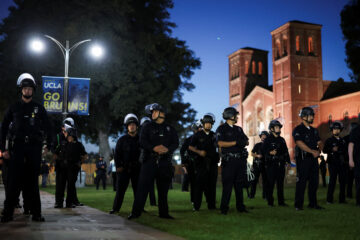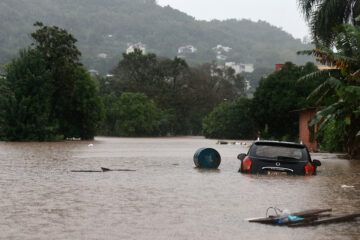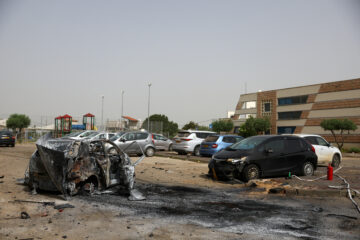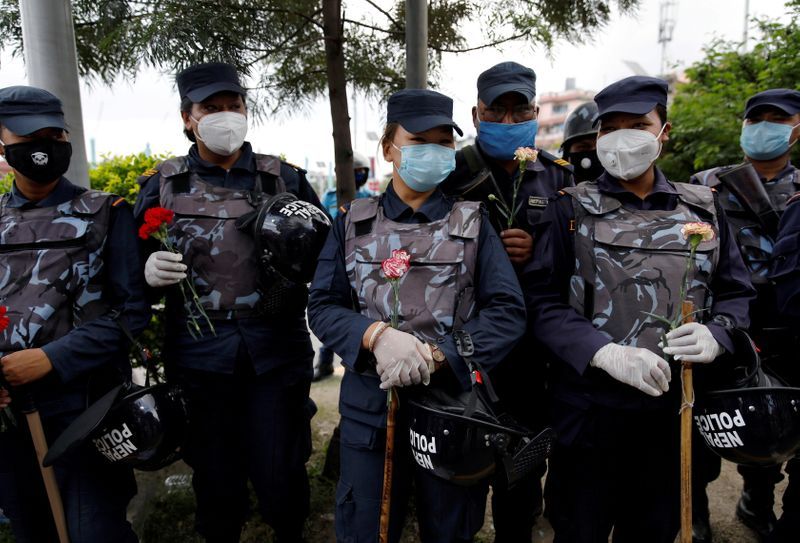Nepal earthquake survivors turn to rebuilding homes and lives
Reuters
Six years ago, Paru Shrestha\’s family tore down their old home in the Nepali town of Sankhu and replaced it with a modern, five-storey house. It probably saved their lives.
On April 25, a devastating earthquake killed over 7,700 people and flattened towns and villages across central Nepal, including most of Sankhu\’s fine old buildings.
But Shrestha\’s no-frills home stood cracked yet intact among the rubble and dust of neighboring buildings.
"If this was an old house, we\’d all be gone," said Shrestha, a 28-year-old office worker in the nearby capital Kathmandu.
Ten days after the 7.8 magnitude quake, many people were still searching debris for the bodies of loved ones, or struggling to recuperate from injury and trauma.
Many surveyed their wrecked communities and wondered how they would ever rebuild.
Survivors across the Himalayan nation expressed gratitude for international relief workers and the local soldiers who sped to their aid in the disaster\’s wake.
Now many fret that foreigners may not stay long enough to help with the equally daunting task of resurrecting homes and livelihoods, while the Nepalese government\’s reputation for inefficiency and graft is a further cause for concern.
Kathmandu is a city of migrants, and in the days after the quake tens of thousands of Nepalis left for family homes in distant villages. Soon, a place famed for its bustling, narrow streets was eerily deserted.
Cholendra Dawadi, 46, traveled against the human tide.
A farmer from Dhading, a town close to the quake\’s epicenter, he survived unscathed.
But his 21-year-old daughter, Shakuntala, who studied German in Kathmandu and like many Nepalis hoped to one day work abroad, was badly injured while fleeing her collapsing hostel.Dawadi reached the capital to find her, bloodied and half-conscious, at a private clinic. He took her to the city\’s National Trauma Centre, opened just six months before and now overflowing with casualties.A week later, the trauma ward was almost empty. But Shakuntala was still there, groaning with pain, her scab-ringed eyes shrouded in medical gauze."She can still see," said Dawadi, who has slept each night in a chair with his head resting on her bed. "But she can\’t get up and she has problems speaking."
Doctors suspect a skull fragment was lodged in her brain.
Dawadi\’s stoicism is familiar. The Nepal of cliche is gritty and resilient, a land of Gurkhas and Sherpas. But many survivors do not complain simply because they know other Nepalis are suffering, too.
In early May, Nim Bahadur Thapa, 51, stood in a Kathmandu alley where damaged buildings leant precariously against each other. A breeze carried the smell of rotting bodies, two of which belonged to his niece and her daughter.
Hidden from view, search teams from Nepal, Japan and Korea cut through concrete and metal to free them.
Once that happens, Thapa will take the bodies to the family\’s home in Rupandehi, west of Kathmandu, and cremate them.
"I feel very sad, but this is no time for tears," he said. "We\’re not the only family suffering."
The quake has affected 8 million of Nepal\’s 28 million people, with at least 3 million needing tents, water, food and medicines over the next three months, said the United Nations. About 519,000 houses have been damaged or destroyed.
Many are in mountainous regions, served by few if any roads, and where aid has been slow to reach. Some survivors have relied on the efforts of ordinary Nepalis that have often gone unreported amid the huge relief operation by foreign agencies.
Bhupendra Dhangal, 47, hails from a village in Sindhupalchowk, one of the worst-hit districts, but was living in Kathmandu when the quake came.
Afterwards, he and his friends filled a truck with provisions, then drove to Sindhupalchowk to hand them out.
"We thought we should do something for our village," said Dhangal. "It\’s not right that we can eat and others cannot."
In the old town of Sankhu, where Paru Shrestha built her new house, smoke from one of the last funeral pyres drifted over the broken rooftops.
Most of the dead, at least 120 in and around the town, were cremated within days, in accordance with Hindu rites.
Charities were dishing out free cooked food and running a small clinic. Nepali soldiers helped residents retrieve possessions from broken buildings.
Now many of Shrestha\’s neighbors were turning their thoughts to the future.
"If we can\’t rebuild our homes, we\’ll be displaced. We can\’t let that happen," said Madan Shrestha, 35, a bookseller who is not related to Paru. But most Nepalis cannot afford even to demolish their damaged houses, never mind build new ones.
"We\’ll need lots of help from the world," he said.
SOURCE: REUTERS
[do_widget_area inner_adsbar]










